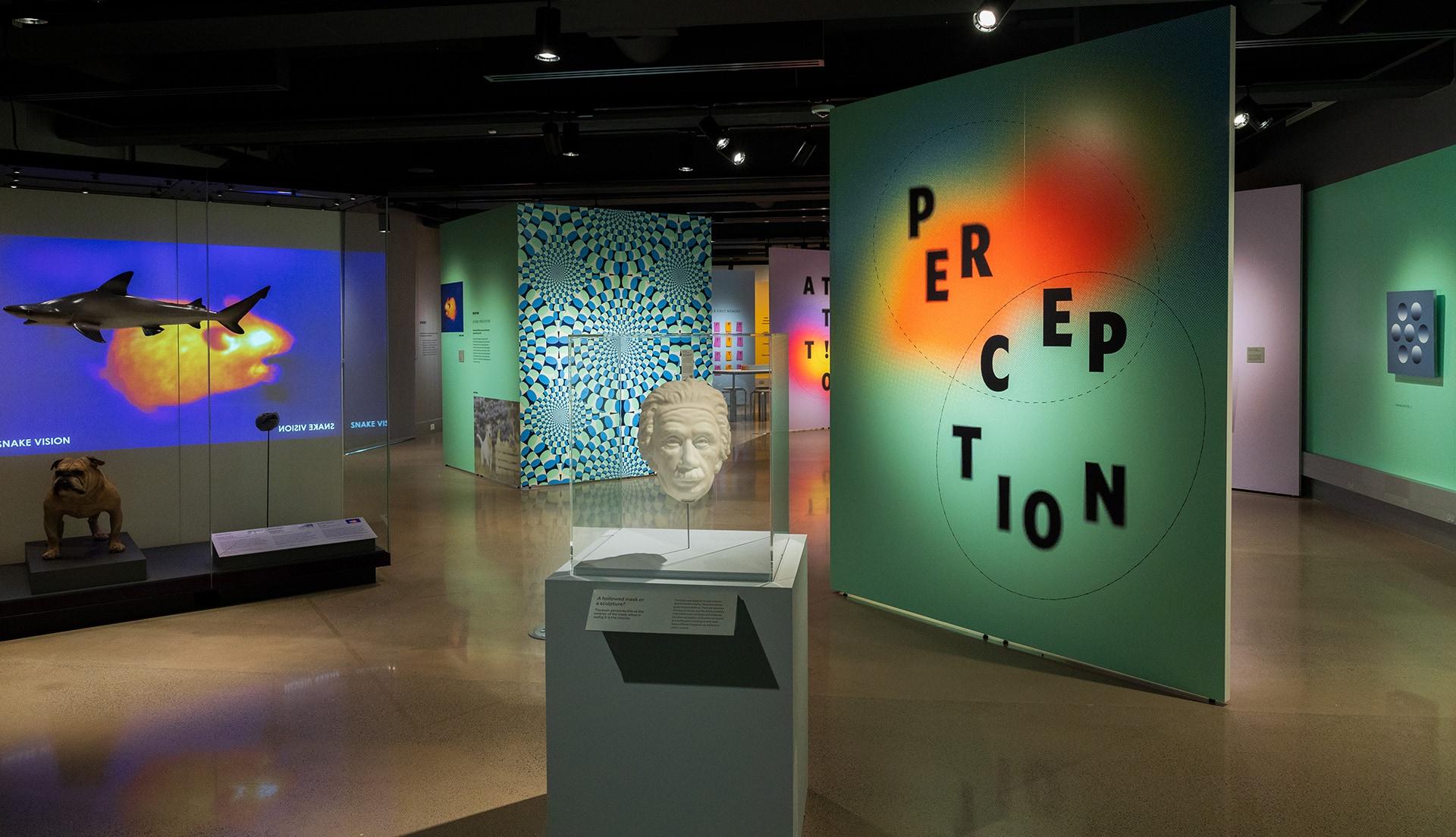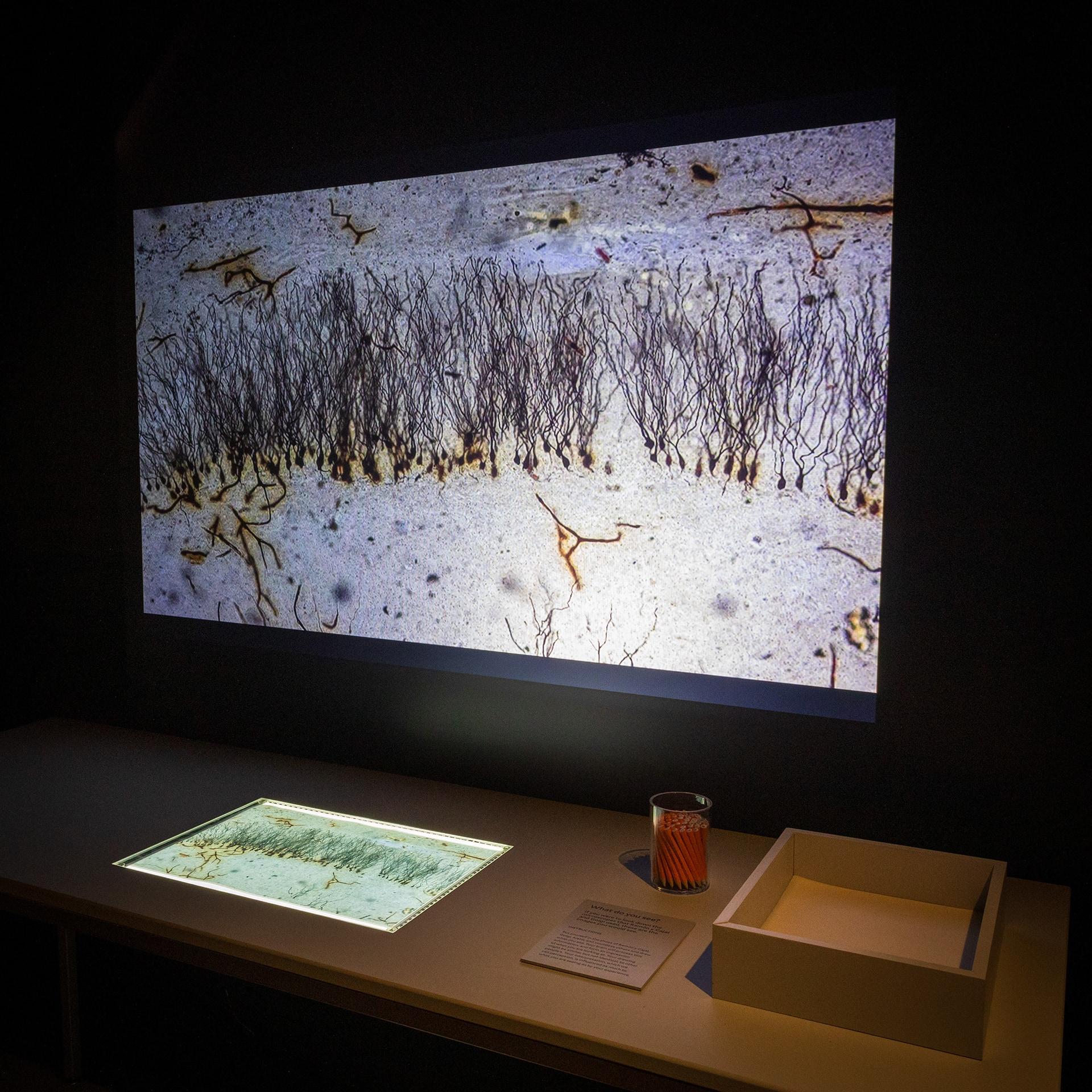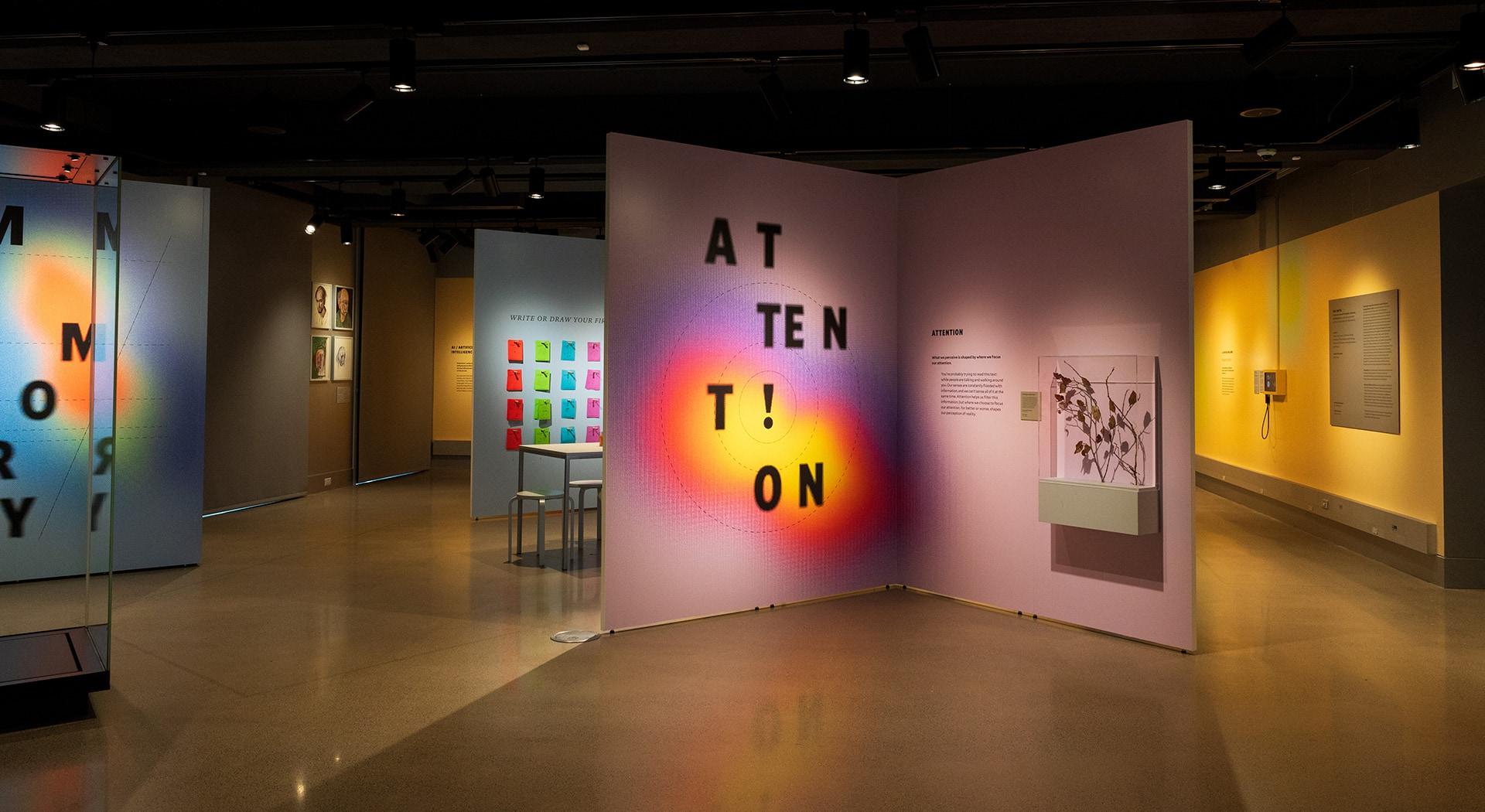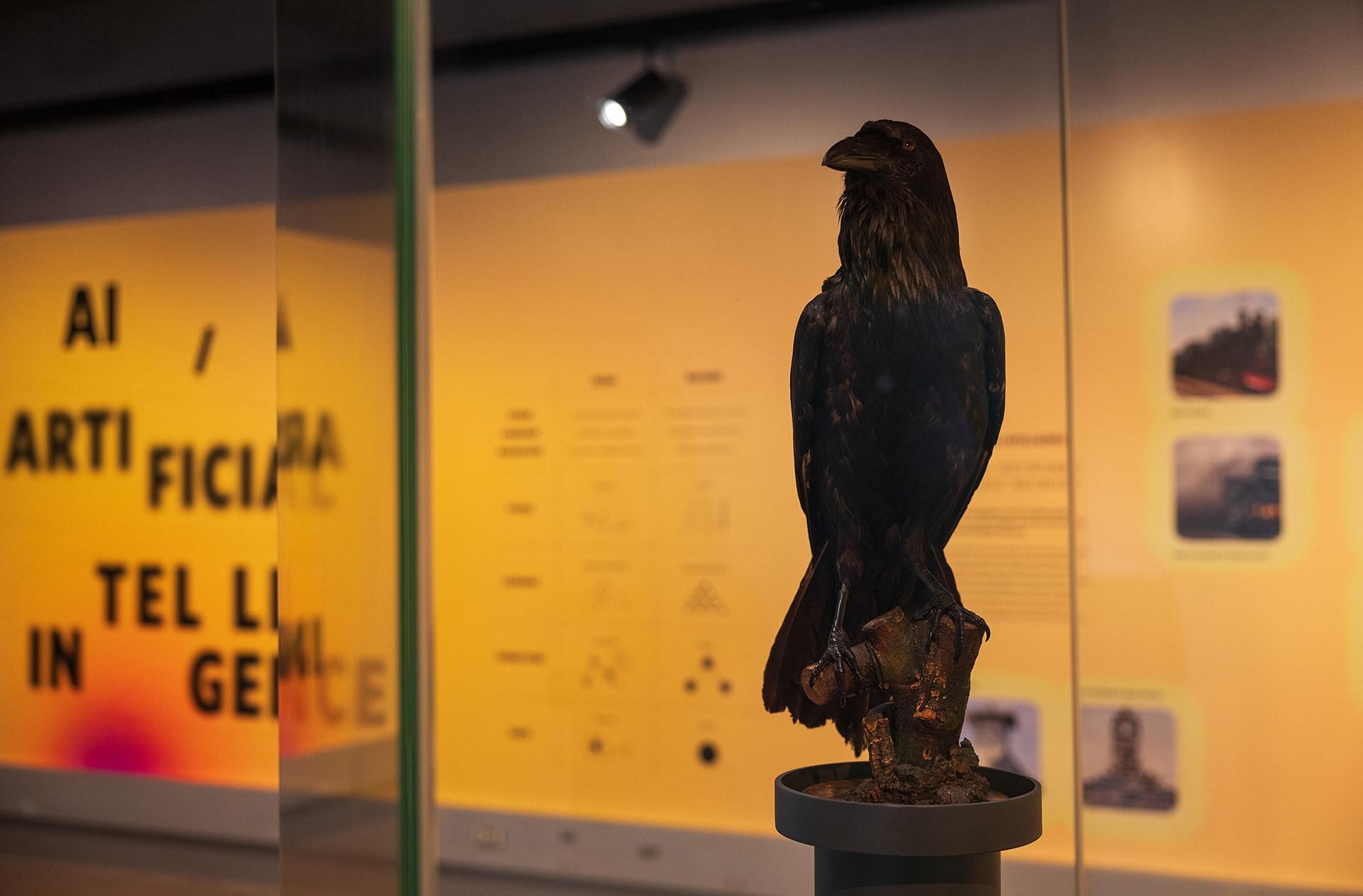The ability to remember a loved one, perceive a beautiful sunrise, or read these words resides within a three-pound organ in your skull. The brain is the center of our humanity, the machine that powers every human endeavor, accomplishment, and feeling. And yet, how it works remains one of the greatest mysteries of science.
“Mind/Matter: The Neuroscience of Perception, Attention, and Memory,” the first temporary exhibition at the newly reopened Yale Peabody Museum, explores the wonders of human cognition by taking visitors on a journey through the historical and modern science of the brain. Visitors will learn how the brain is studied, what it is made of, how it builds our reality, and how discoveries about it are transforming our lives.
The exhibition, which opened on December 7, 2024, was created in partnership with faculty from the Wu Tsai Institute at Yale University, whose state-of-the-art research seeks to understand human cognition.

"Mind/Matter" includes historical scientific drawings that have never been shown to the public before, magical illusions that challenge our perceptions of reality, interactive stations that make visitors reflect on memories old and new, and displays to explore how recent advances in artificial intelligence challenge our sense of what it means to be human.
“The human brain has 100 billion neurons, similar to the number of stars in the Milky Way galaxy. The same way that, in a clear night, one can stare at the sky and sense an infinity of possibilities, we have structured this exhibit to take the visitors in a journey through the constellation of possibilities that each human brain represents,” said curator Daniel Colón-Ramos, Dorys McConnell Duberg Professor of Neuroscience and Cell Biology.

At the heart of this exhibition are the original and precious drawings from two founding scientists of modern neuroscience: Camillo Golgi and Santiago Ramón y Cajal. While working independently from each other in the late 19th century, Golgi and Ramón y Cajal looked at the same section of the brain and drew vastly different interpretations. Ramón y Cajal described the brain’s neurons as “mysterious butterflies of the soul, whose wingbeats might one day illuminate the secrets of the mind.” Their scientific drawings, as poetically beautiful as their words, are a unique documentation of the marriage between mental and physical within each of us.
“How scientists learn is very much related to how we all learn, and we want to expose all visitors to that joyful process of scientific discovery by walking in the shoes of these two giants, including experiencing their original scientific drawings, which have great historical, scientific and artistic value,” Colón-Ramos said.
These drawings changed the course of science, yet many of their originals have never been exhibited to the public. Through an international collaboration with the Museo Nacional de Ciencias Naturales and the Legado Cajal (Spain) and the University of Pavia and the Golgi Museum (Italy), the Peabody Museum brings, for the first time in history, drawings of these two important scientists side by side in an exhibit that exposes the visitor to the process of scientific discovery, and to the remarkable way that scientists use their own brains to discover how the brain works.
“That these two scientists, when they were making their discoveries, looked at the same thing and saw something different, also speaks volumes to how our minds work. It touches on the fascinating topic of human perception and attention, which we explore in the exhibit by walking the visitors through visual illusions and magic while explaining the scientific basis of these illusions,” Colón-Ramos said.

Through a series of interactive exhibits, the curators bend our perception to reveal how our brain constructs our reality. What do we really see? How does our brain make sense of the images from our eyes? How does our life experience inform what we observe? The exhibits play with your mind and then explain the science behind it.
“The exhibit gives the visitor an idea of how their brains make assumptions about the world around us. We have the feeling that we see a perfect replica of everything, like a photograph, but our brain makes continuous choices about what to pay attention to and thus determines what enters our consciousness,” Colón-Ramos said.
“By learning about cognition, we hope that visitors come away feeling like they learned something about themselves. Indeed, the brain’s ability to stitch together experiences like visiting the museum into memories is one of the core topics of the exhibit. These memories are the source of our knowledge, skills, nostalgia, creativity, fears, and dreams. Incredible research past and present has revealed how memories are stored and retrieved in the brain, and how they are lost across development and in disease. In this way, the exhibit holds up a mirror to help each of us reflect on who we are”, said Nick Turk-Browne, Director of the Wu Tsai Institute and Professor of Psychology.

“Mind/Matter” is the first time the Yale Peabody Museum and the Wu Tsai Institute have worked together, creating an opportunity to tie the traditions and collections of the museum with ongoing research from the Institute.
“Neuroscience is a dynamic field that has not been previously directly covered in the Museum, but that permeates all aspects of science, including our collections. So, we leveraged historically valuable collections to display seldom-seen objects from the turn of the century which were used then, and still work now, to challenge our sense of perception. We also worked with the curators to explore cognition in the context of evolution. Animals also have cognitive abilities, and we exhibit objects from our collections to showcase how different animals perceive the world around us and how those perceptions compare to human perception," said David Skelly, director of the Yale Peabody Museum.
In addition, “Mind/Matter” offers the perspectives of contemporary Yale University scientists on the latest research and materials from the courses they teach at Yale, tackles the topic of artificial intelligence, and shows the different perceptions animals use to engage with the world.
Other objects on display include drawings from the New Yorker and New York Times illustrator Lonni Sue Johnson depicting her recovery from encephalitis, an inflammation of the brain, paintings from artist William Utermohlen, who used his artwork to process the psychological and physical experience of his decline because of Alzheimer’s disease, birds from the Peabody’s ornithology collection, and Handsome Dan II, one of Yale’s original mascots.
